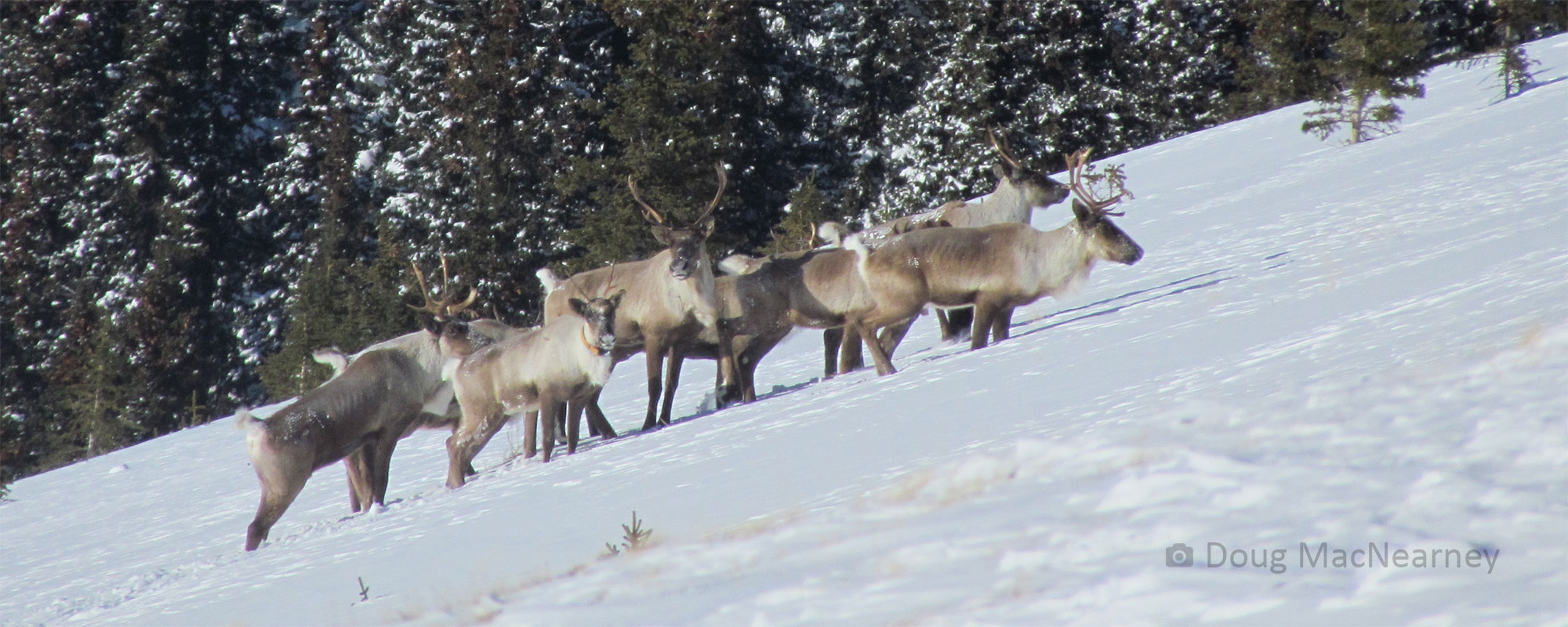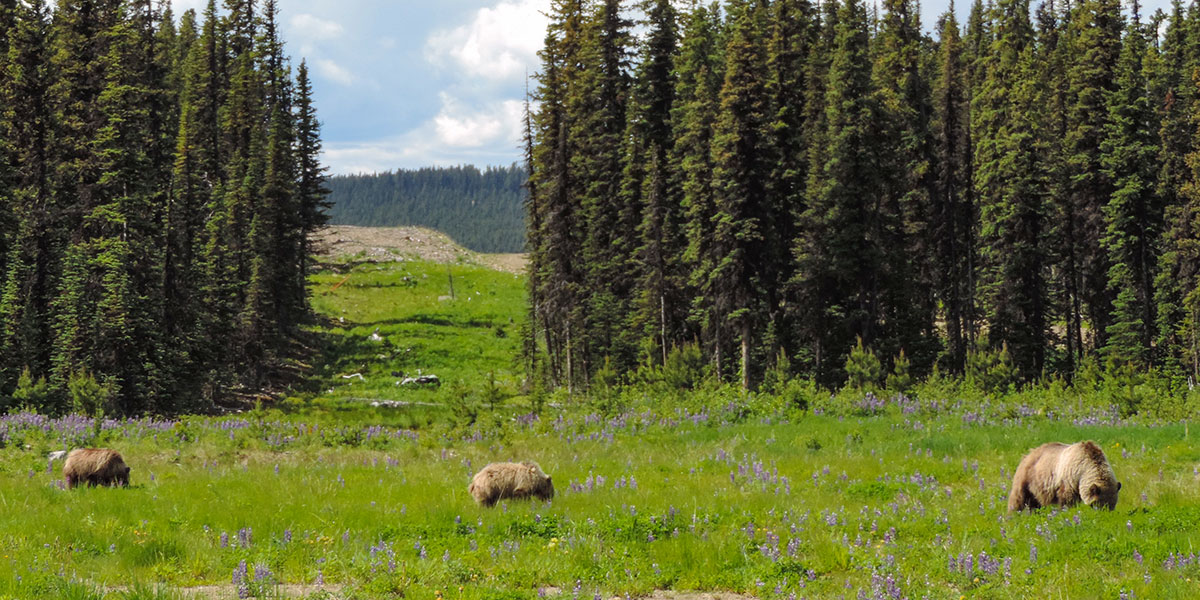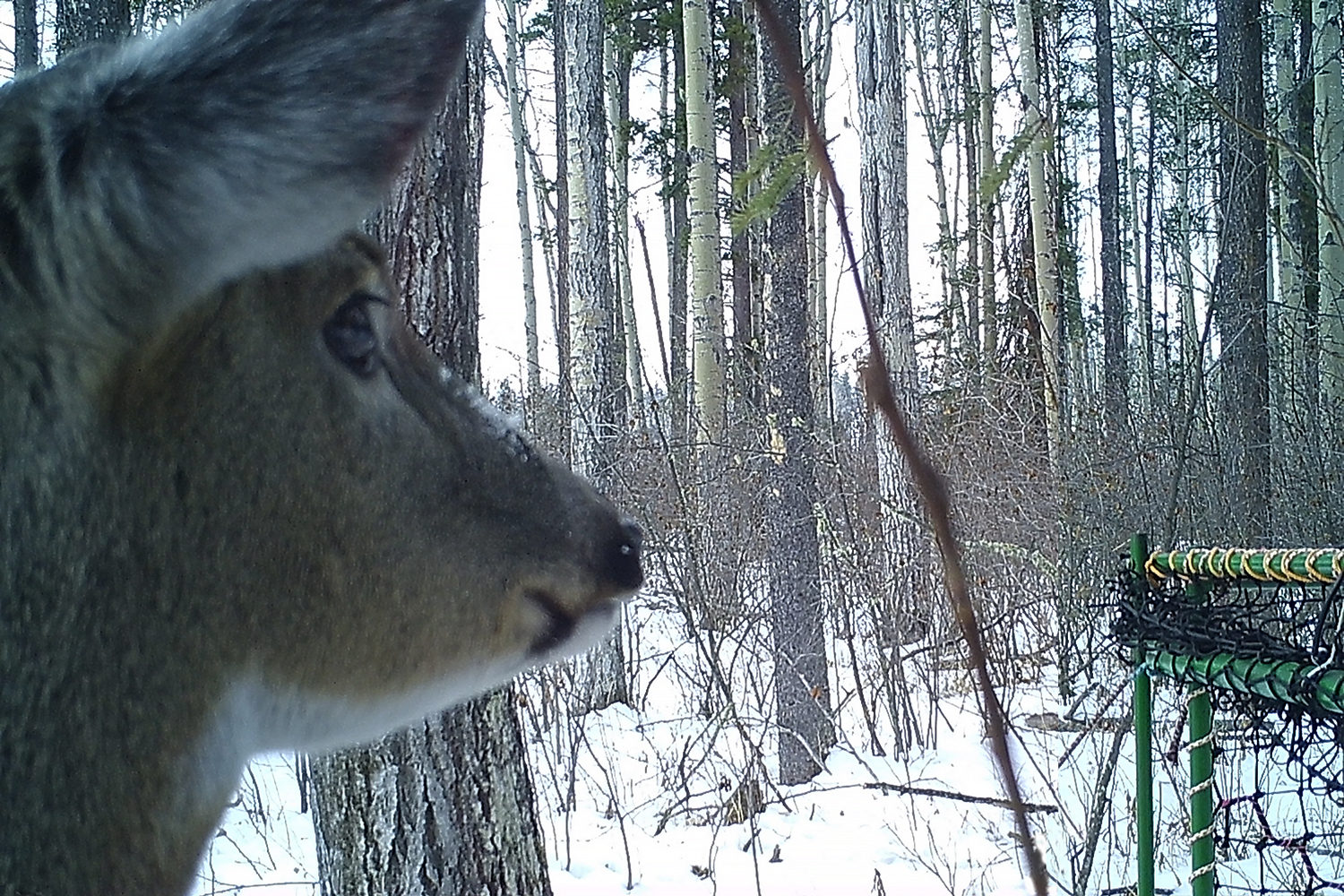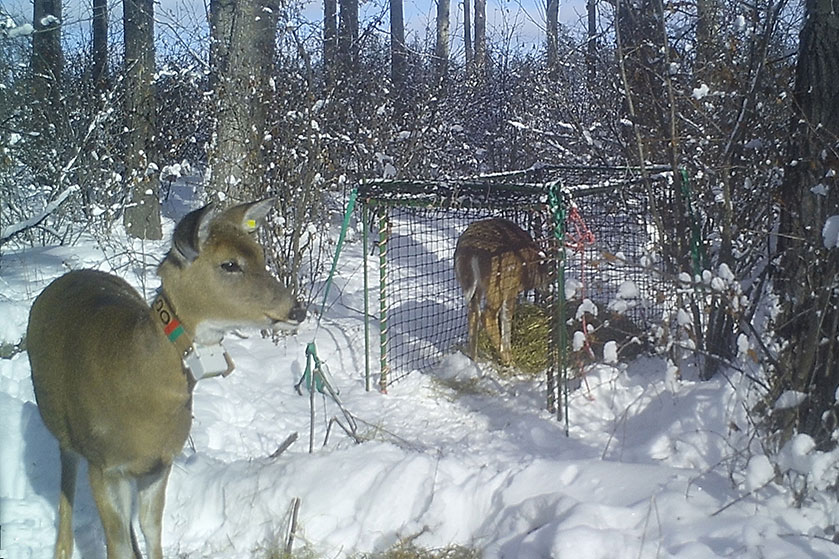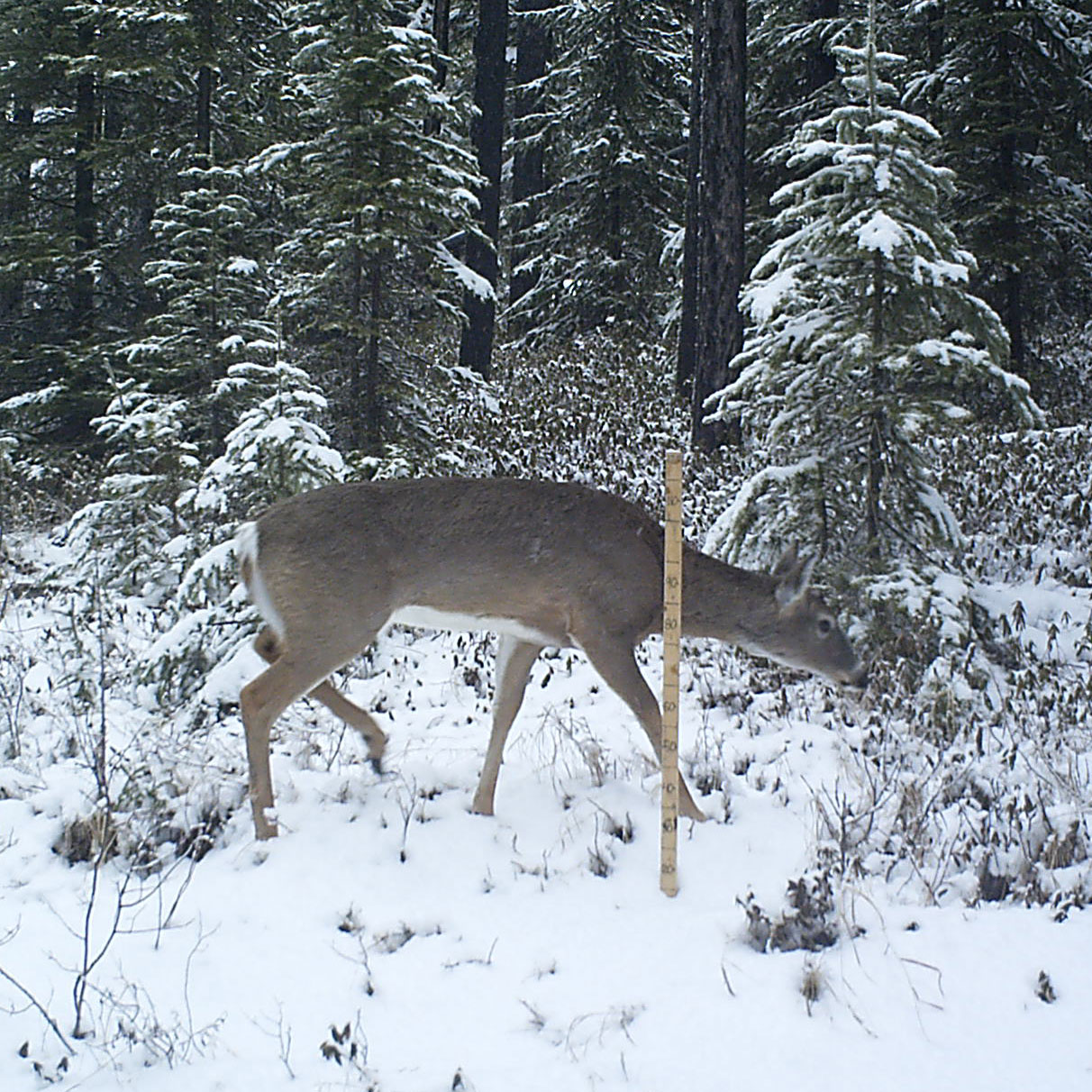
Abstract
Diet is one of the determinants of ungulate ecology. However, there have been few studies of the diet of sympatric ungulates in western Canada. We used DNA metabarcoding of fecal samples to evaluate the winter diet of white-tailed deer (Odocoileus virginianus), mule deer (O. hemionus), moose (Alces americanus), elk (Cervus canadensis), and caribou (Rangifer tarandus caribou) in west-central Alberta. We found that forbs comprised 53%–82% of the reads from plant DNA, while mosses, sedges, grasses, and shrubs made up relatively little of each ungulate’s diet. There was considerable overlap in the winter diet of the five ungulates (Horn-Morisita index = 42%–64% overlap; Bray-Curtis index = 20%–45% overlap). Moose had the most distinct diet, while elk and caribou had the least distinct. However, our analysis was restricted to a coarse taxonomic resolution (family). Lichen species were not identifiable, beyond their fungal component and a number of taxonomic assignments were difficult to rationalise given our knowledge of the diet of the five ungulate species and the ecology of west-central Alberta, Canada. DNA metabarcoding of fecal samples is efficient, but apparent limitations with the technique restrict the description and quantification of diet of the five species of ungulate that we studied.
Read the full paper here (open access).
Citation
Suzanne Stevenson, Chris J. Johnson, Laura Finnegan, and Roy V. Rea. 2025. Winter diet of five sympatric ungulates in west-central Alberta, Canada—inference from DNA metabarcoding of fecal pellets. FACETS. 10: 1-13. https://doi.org/10.1139/facets-2023-0195

